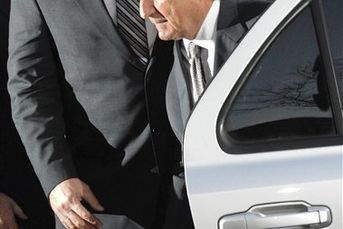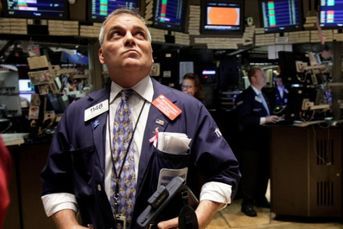CONSECO ELBOWS WAY TOWARD TOP OF MERRILL SHELF: HOW MARKETING ZIPPED FLEDGLING PAST OLDER RIVALS
Conseco Fund Group is no mutual fund powerhouse. With less than $400 million to manage, it’s too new…
Conseco Fund Group is no mutual fund powerhouse. With less than $400 million to manage, it’s too new to boast a Morningstar track record. Of its six funds, just one — a junk bond offering — has produced returns worth writing about.
Yet in the past five months, Conseco has become one of the fastest-selling fund families at Merrill Lynch & Co., the nation’s largest brokerage with more than 15,000 brokers.
Since first attaining what marketers call “shelf space” at Merrill late last year, Conseco has jumped from dead last among 98 fund groups available to Merrill brokers to an impressive 38th as of March 31.
Conseco’s secret: a focused and aggressive marketing push that was heavy on the usual schmoozing — dinners and tickets to sports events, for instance — but even heavier on workshops and broader educational seminars that have turned Conseco reps into a financial planning training crew that operates within Merrill and
other brokerages.
“It allows us to get in front of the most people in the most cost-efficient way,” says D. Bruce Johnston, head of mutual fund marketing and sales at Conseco Fund Group, an arm of Carmel, Ind.-based insurer Conseco Inc.
The strategy has paid off: Through April 30, Conseco had racked up $120 million in mutual fund sales this year — 50% more than it made in all of 1998, according to Mr. Johnston. About 95% of those sales have come from Merrill and a dozen other brokerages targeted by the company, he says.
Likewise, the Conseco Fund Group’s assets have risen to $383 million as of May 18, from $286 million at yearend. Mr. Johnston expects additional sales will bring total assets to about $750 million by the end of the year.
babe in the woods
Not bad for a company that started offering mutual funds only in 1997. (Its sister company, Conseco Capital Management, manages $40 billion for pension funds, wealthy individuals and other insurers.)
Conseco’s success provides a glimpse into what smaller fund companies must do to get their offerings in front of outside brokerage armies that can make or break a fund group.
With thousands of mutual funds available, brokerages typically limit the number of fund makers its brokers can pitch to clients, usually keeping only the top-selling outfits’ wares on the shelf.
Consider: 96% of $42.1 billion in total U.S. mutual fund sales for the first quarter was claimed by the 25 top-selling funds, according to Chris Brown, an analyst with Financial Research Corp. in Boston. That left $1.7 billion for the rest of the 10,000 or so funds out there.
To break through, smaller names must tout more than great performance; they must offer value-added service, says Russ Alan Prince, a consultant in Stratford, Conn.
Without three-year track records — the minimum period for an influential Morningstar Inc. rating –funds struggle to get noticed.
“As a broker, if I have two good funds, I’ll go with the one that does this other stuff for me,” says Mr. Prince.
For Conseco, this means providing Merrill brokers with educational sales support, such as bringing in speakers to teach rookies how to prospect and network for clients, or to coach top brokers on estate planning and trust services so they can improve their service to wealthier clients.
Other programs include Internet training and seminars on how brokers can better present themselves to clients.
“Merrill’s not doing enough to educate and expand its brokers’ services,” says Mr. Prince. “Fund companies are finding niches to do that — and the brokerages are happy to let them in.”
All these programs, which Mr. Johnston says are being carried out in different regions at Merrill, can cost anywhere from $30,000 to $50,000 a branch, depending on its size and needs.
A Merrill spokeswoman could not be reached for comment.
Conseco came under scrutiny earlier this year for its Merrill marketing plan after reports surfaced that its efforts included tickets to Indianapolis 500 time trials. The National Association of Securities Dealers reviewed Conseco’s marketing plan and found it “well within regulatory guidelines,” says Mr. Johnston.
While some may call this buying shelf space, some industry consultants say Conseco’s broader kind of marketing is good for both parties and does not violate regulatory guidelines.
Fund companies are no longer permitted by regulators to conduct, for example, sales contests giving the winner a car or an all-expenses-paid vacation.
“This is earning your way in front of brokers, not buying your way,” says Steven Gresham, an industry consultant in Madison, Conn., who has given motivational speeches to Merrill brokers on Conseco’s behalf.
follow the leader
The practice has already caught on. “This is a strategy all fund companies are working on, ” says Mr. Prince. “By next year it will no longer be news, but part of the landscape.”
Analysts stress that all the freebies in the world won’t get a big brokerage to pitch your funds unless performance is strong.
Indeed, 45% of the fund group’s sales this year have been for the Conseco High Yield Fund, which had a 12-month return of 4.95% through April 30, finishing in the top 10% of funds in its investment category, according to mutual fund researcher Morningstar Inc.
Yet Conseco’s other funds are middling performers — or worse. Trailing 12-month returns of a balanced fund and a mid-cap growth fund were 0.79% and -0.91% as of April 30, putting them in the bottom 13% and 19%, respectively, of their peers, reports Morningstar.
Now that its foot is in the door, however, Conseco has big hopes for the future.
While it plans to continue marketing to its dozen core brokerages — including Prudential Securities Inc., First Union Securities Inc., Janney Montgomery Scott Inc. and Raymond James Financial Inc. — it hopes to add a few more to the roster.
The funds also are available on three supermarkets.
Mr. Johnston expects sales of $400 million to $600 million for 1999. To reach that goal, he plans to increase the number of wholesalers — the folks who promote the funds to brokers — to between 20 and 25, from the current 14.
“This is going to continue to be a grass-roots effort,” he says. “Each day, we go out and compete. We’re not resting on our laurels.”
Learn more about reprints and licensing for this article.






